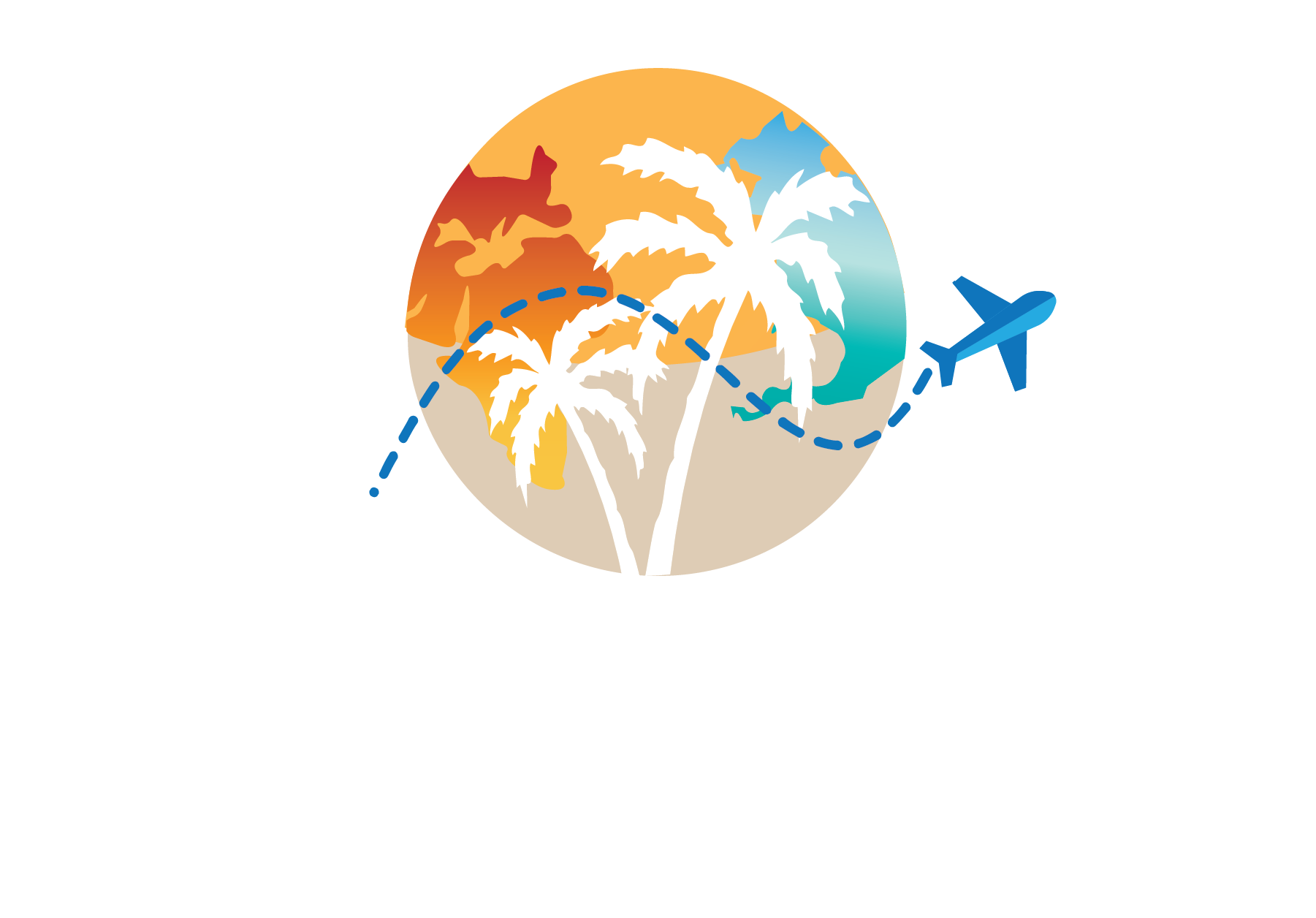Nestled on the southwest coast of Florida, you are sure to find some of the best beaches in Sanibel for Shelling.

Disclosure: Some of the links in this article may be affiliate links, which can provide a small commission to me at no cost to you if you decide to make a purchase. You can read more in my disclaimer here.
Sanibel Island is tucked away approximately 23 miles southwest of Fort Myers Beach and sits right on the Gulf of Mexico. Making it easily accessible from the mainland.
The island has been hit with quite a few storms over the years with the latest being Hurricane Ian in 2022. While it did quite a bit of damage, the island is making a comeback and still holds true to its title, “Shell Capital of the World.”
With about 12 miles of beaches and amazing shelling opportunities, Sanibel attracts avid shell collectors and nature enthusiasts from all over with good reason. It has some of the world’s best shelling beaches!
Table of Contents
ToggleWhat Makes Sanibel Ideal for Shelling

The shores of Sanibel Island are home to over 400 species of shells making it a great place for shelling. Mainly due to its east-west orientation which is not typical for Florida’s coastline.
This positioning allows the Gulf of Mexico’s currents to wash up a wide variety of shells daily. Hence, the accumulation of shell collections that are found throughout these gulf-side beaches.
How Diverse Marine Life Contributes to the Abundance of Seashells
The waters surrounding Sanibel Island boast a rich and diverse marine ecosystem. Thus, creating a thriving habitat for shell-producing species like mollusks, crustaceans, conchs, and other marine life.
These species significantly reproduce in abundance leaving behind a rich collection of shells.
The Sanibel Stoop
The term, ‘Sanibel stoop’ was coined to refer to the beachcombers engaging in Sanibel Island shelling. So when you are bending at the waist in your search for the best shells, you are assuming the ‘Sanibel stoop’ position.
And if you’re on Captiva Island, the shell hunting ‘bend at the waist’ is referred to as the “Captiva Crouch!”
4 Top Beaches for Shelling on the Island of Sanibel
It’s no secret that the beaches of Sanibel Island in Southwest Florida offer the best shelling experience. Which is why thousands of travelers flock to the island each year. If you’re a Sanibel Island first-timer, definitely consider the following beach hot spots for the best Sanibel shells to get your hands on.
Each beach destination offers a unique shelling adventure you are sure to enjoy.
Bowman’s Beach
Nestled on the western tip of Sanibel Island, Bowman’s Beach offers a therapeutic shelling retreat. The Bowman’s Beach shoreline is covered in all kinds of unique shells. Making it a shell collector’s paradise!
In addition to shelling, you can also enjoy a leisurely sunset stroll, lounge under the sun, or frolic in the water. But don’t forget to keep your eyes peeled for some of the most beautiful shells that wash up ashore!
Bowman’s Beach not only captivates with its natural beauty but also provides convenient amenities, including picnic tables and nature trails.
Blind Pass Beach
Blind Pass Beach is situated at the northern tip of Sanibel Island right where it meets Captiva Island.
This beach is renowned for the convergence of the Gulf of Mexico and Pine Island Sound. In turn, creating a dynamic environment that influences the abundance of shells.
During low tide, expansive tidal flats emerge, providing an excellent opportunity for shellers to explore and discover all kinds of seashells. Additionally, the shallow waters of Blind Pass are home to various marine life. Making encounters with live shells part of the unique shelling experience.
While shelling is better on the Sanibel side, the strong current coming in from the gulf and bay sides is something to be mindful of.
You’ll also want to keep an eye out for live sand dollars as they often wash up along the shoreline. They are a beautiful sight to see but must be left alone as they are a protected live species. Live shelling is prohibited.
Lighthouse Beach
Situated on the eastern tip of Sanibel Island, Lighthouse Beach is known for its scenic beauty and diverse array of seashells.
With the iconic Sanibel Lighthouse gracing the coastline, this beach offers a perfect spot for shelling making it a sheller’s delight. Plus, the panoramic views of the Gulf of Mexico are priceless!
Some of the most frequent shell finds on this beach are Whelks and Cockles. If you’re lucky, you may even spot a Junonia which is considered one of the rare shells!
14 Best Unique Places to Stay in Florida
Captiva Beach
Just across the Blind Pass Bridge, lies Sanibel’s sister island, Captiva. Both share the same captivating beauty and charm.
Together, Sanibel and Captiva beaches form a barrier island paradise for shelling enthusiasts and beachgoers alike.
Located on the western end of Captiva Island, Captiva Beach is a hidden gem known for its sugar-white sands and unique sea shells.
The beach is particularly famous for its abundance of colorful coquinas, scallops, and conchs. You may also be able to spot the occasional prized Junonia shell.
The shallow waters along the shore provide an ideal environment for shell deposits, making it a haven for collectors.
Types of Shells You Can Expect to Find

While there are a wide variety of seashells that wash up on shore daily, below are some of the most commonly found.
Conch Shells: Sanibel’s beaches are home to various conch shells, including the Florida fighting conch and horse conch. Both are known for their vibrant hues and unique patterns.
Lightning Whelks: These shells showcase striking spiral patterns. It makes them easily recognizable and sought after by shell collectors.
Olive Shells: These are characterized by their elongated and glossy appearance.
Coquinas: Small, colorful, and intricate, coquinas contribute to Sanibel’s vibrant mosaic of shells.
Scallops: These are known for their fan-shaped shells and can be found in various colors.
Tulip Shells: With their elegant and elongated form, tulip shells are another shell favorite.
Sand Dollars: Flat and disk-shaped, sand dollars are often discovered along the sandy shores.
Angel Wings: Delicate and wing-shaped, angel wing shells are prized for their intricate patterns and pearly iridescence.
Cockle Shells: This type of shell has a ribbed pattern and a heart-shaped appearance.
Keep in mind that collecting live shells is not allowed and is protected by the SCCF. Ethical and sustainable shelling practices are essential to preserve the delicate coastal ecosystem.
Tips for Shelling on Sanibel Island Beaches

Shelling can be so much fun to the point it becomes addicting. Especially, when you experience unique finds and have the opportunity to observe live shells in their natural beauty and habitat.
The following tips will yield the best results in your shelling experience.
Implement Respectful and Sustainable Shelling Practices

First and foremost, collecting live shells is strictly not allowed and is illegal on both Sanibel and Captiva Islands.
So before you go stashing your shells away, double-check to make sure there are no inhabitants or living animals still inside. Sand dollars included.
Pay close attention to the closed shells. And those with a hard cover over its opening means someone resides in there. If you see any movement or notice there is a living animal inside, put the shell back down and move on.
You may also come across crabs, starfish (aka sea stars), and sea urchins. These are also considered live animals (or live shells).
Observe without touching them or place them back in the water carefully if in harm’s way. If you get caught walking off with or taking any live shells from the beach, you will be slapped with a hefty fine.
Don’t Be Afraid to Sift Around
Some of the most gorgeous shells lie along the shoreline and come in all kinds of shapes and sizes. Sift through the soft sand mounds on the edge of the water to see the treasures that wash up.
Shelling During the Summer Months
When spawning season is underway, specifically between June and July, a higher volume of sand dollars and 9-legged starfish make their way onshore. Be extra cautious in the water during this time to prevent harming them.
Do not play with or toss them around. Let them be. If needed, carefully move them into the water for safety.
Be An Early Riser
Get started early before the crowds roll in. If you want to maximize your findings, the best time of day to head out is first thing in the morning. Especially after a storm has made its way through.
Know the Tide
The best time for shelling on Sanibel Island is hands down, during low tide. Typically, the tide is at its lowest in October and November but the summer months are just as good. Just be sure to check the My Tide Times app to stay in the know!
What To Bring For Shelling On Sanibel Island
Whether you’re visiting Sanibel for the day, a weekend, or a week-long vacation, make sure you go prepared. Having everything you need for your shelling adventures will make it all the more enjoyable.
Packing Recommendations:
Snorkeling Gear
Having a mask and snorkel comes in handy during high tide. It helps to spot the smaller shells and a lot of shells that have yet to make their way ashore.
Shelling Net Bags
Choose a shelling net bag that is easy to carry with tiny holes for water flow. This way you are sure to keep your shells intact without losing them.
Reef Safe Sunscreen
The South Florida sun can sneak up on you with a serious sunburn so don’t take chances. Use reef-safe sun protection to lather up often throughout the day. This one is clean, safe and I highly recommend it!
Sanibel and Captiva Island Shell Guide
This is not essential but it’s good to keep on hand for shell identification, shell cleaning tips, and getting around the beaches. Plus, it’s waterproof!
Beach/Water Shoes
Because there are so many Sanibel Island shells scattered throughout the beaches, having a good pair of beach or water shoes is ideal. They will help prevent you from getting cut.
Pack a Cooler
I highly recommend a cooler backpack to make it easier to haul around. In it, you’ll want to pack a good amount of water for hydration. This is key if you plan on spending the day exploring along the beautiful beaches.
Be sure to also pack some snacks and lunch food for when you get hungry.
Beach Shovel/Sifter
This tool is not an absolute must but it is helpful to have for Sanibel shelling. It makes it easier to sift and shovel up shells that sometimes get stuck in the sand.
Beach Wagon
Consider taking a beach wagon if you have a lot to haul. You may be in for a lot of walking. Especially at Bowman’s Beach. The walk to the beach area is longer than most and runs through protected mangroves.
Wildlife Encounters During Shelling
My favorite part of visiting Sanibel beaches is not only the fun shelling experience and amazing sunsets, it’s the wildlife encounters that come as a surprise.
If you pay close attention, you’ll spot dolphins that swim up to say, “Hi” or put on a show in the near distance. It’s one of the most beautiful sights you’ll see along the Sanibel/Captiva coastline.
Here are other wildlife animals you might come across:
Shorebirds: Sanibel Island is home to a variety of shorebirds such as herons, egrets, and ibises. These birds can be seen along the shoreline while searching for food in the sand.
Manatees: These gentle giants can often be spotted in warm waterways. One of the most common areas includes the Sanibel fishing pier near Lighthouse Beach or migrating along the docks on Captiva Island.

You may also be able to spot these babies on a kayak trip through the mangroves. They love the warm shallow waters so keep an eye out for their slow-moving bodies surfacing for air.
Just be sure to bring bug spray! Mosquitos are native to the area so you want to take precautions.
Sea Turtles: Sanibel Island is part of the sea turtle nesting habitat. Depending on the time of year, you might encounter loggerhead, green, or leatherback sea turtles. Be cautious and respectful if you come across any nests. They are protected by law.
Ospreys: These birds of prey are common in the area and can be seen soaring overhead or perched on high vantage points. They are known for their impressive hunting dives into the water.
Remember to maintain a respectful distance from wildlife and follow any guidelines or regulations to protect the animals and their habitats.
Sanibel Island’s Shelling Festival and Museum
Sanibel Island hosts an annual shell festival each year attracting thousands from around the world. This event celebrates the island’s rich seashell diversity and provides opportunities for shell collectors to come together. However, you don’t have to be a shell collector to enjoy it!
Sanibel Shell Festival:
- The Sanibel Shell Festival is an annual event that typically takes place in March. Organized by the Sanibel-Captiva Shell Club, this festival showcases exquisite shell collections, artistic shell crafts, and educational exhibits.
- Visitors can explore displays of rare and beautiful shells, attend shell art demonstrations, and participate in various shell-related activities.
- The festival often includes a shell show competition where collectors can exhibit their prized finds and compete for awards.
Bailey-Matthews National Shell Museum Programs:
- The Bailey-Matthews National Shell Museum on Sanibel Island offers various programs and events throughout the year. These may include shell walks, lectures, and hands-on activities for both adults and children.
- This museum is a great place to learn more about shells, mollusks, and marine life through educational programs and exhibits.
**Currently temporarily closed. Check back for reopening**
Before planning your visit, it’s a good idea to check the event schedules for any updates as event details are subject to change. You may also want to verify the information as your visit draws near.
Where to Stay on Sanibel Island
There are plenty of vacation rentals to choose from on Sanibel Island if you want more of a home-like type of stay. To compare prices and find the best place to stay to fit your needs, I highly recommend Expedia or Booking. Those are my go-to’s!
Local Tours and Guides
If you’re looking for other things to do and have time to explore more of what Sanibel Island and the surrounding area have to offer, follow the links below. There is plenty more to discover on Florida’s southwest coast!
Final Thoughts

The first time I visited Sanibel Island was back in 1991. We went as a family with two of my closest cousins, aunt and uncle.
I remember it so clearly as it was one of the best times of my life. It didn’t take much to fall in love with the island. In fact, it was instant!
Visiting Sanibel is like discovering a whole different world. It’s unique, family-friendly, and has a local charm about it that leaves an imprint in your life. You can’t help but want to keep going back.
Between the magical sunsets, natural dolphin encounters, and shelling, it won’t be long before it too becomes your Florida favorite!

Sandra Campillo
Sandra Campillo is an eco, vegan lifestyle and travel blogger and entrepreneur. Join Sandra and her community of readers on SandraCampillo.com to learn how to live a healthier, more sustainable, and compassionate way of life.
















